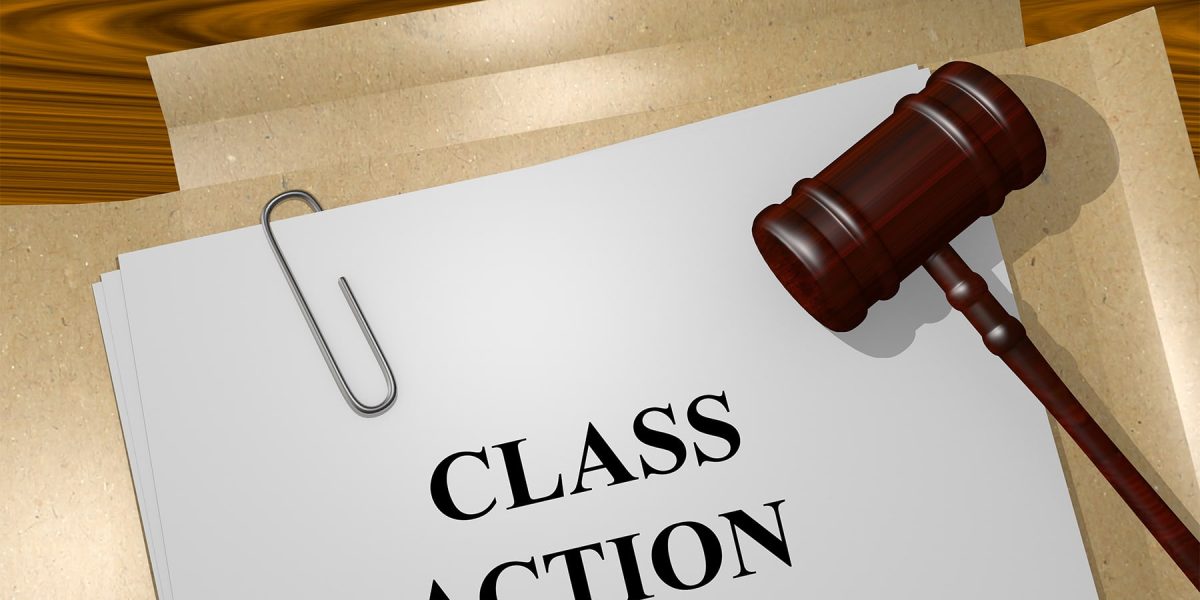The Archer-Daniels-Midland Class Action Lawsuit Unpacked: Stay Educated
The Archer-Daniels-Midland Class Action Lawsuit Unpacked: Stay Educated
Blog Article
Comprehending Course Activity Suits: A Comprehensive Guide
Class action claims have ended up being increasingly usual in today's legal landscape, shaping the method individuals seek justice against effective companies. In this detailed guide, we will explore the ins and outs of course action suits, consisting of the kinds of instances that can be gone after, the actions entailed in submitting a lawsuit, and the benefits and disadvantages of pursuing collective legal action.
What Is a Class Action Lawsuit?
A course action suit is a legal action in which a team of people jointly brings a claim against a defendant or offenders for similar injury or misdeed. This type of claim allows a multitude of people who have endured a similar injury to sign up with pressures and seek lawsuit together, instead than submitting specific lawsuits. Class action suits are frequently utilized in situations where the damage or misbehavior influences a huge team of people, such as item responsibility instances, ecological contamination situations, or situations including customer scams.

In order for a suit to be accredited as a class activity, certain needs have to be satisfied. These requirements usually include numerosity (a multitude of possible class members), commonness (common inquiries of legislation or fact), typicality (the insurance claims of the representative events are normal of the class), and competence of representation (the agent events will fairly and properly shield the rate of interests of the course) When a course action claim is accredited, notice is supplied to potential class participants, who after that have the choice to sign up with the suit or opt-out if they desire to pursue their own individual insurance claims.
Sorts Of Class Activity Lawsuits
There are numerous classifications of course action lawsuits that include a large range of lawful issues and markets. One usual kind is consumer class activities, which entail claims made by a group of customers versus a business for false marketing, malfunctioning items, or unreasonable company methods. These lawsuits commonly seek settlement for the damaged consumers and seek to hold the company answerable for its actions.
One more classification is protections class actions, which are brought by capitalists versus a firm for supposed protections fraudulence. Future FinTech class action lawsuit. These lawsuits usually include insurance claims of deceptive statements or omissions in the business's monetary statements or disclosures, which caused the investors to endure financial losses
Work course activities are additionally prevalent, entailing cases made by a team of employees versus their company for offenses of labor regulations, such as wage, hour and discrimination violations, or wrongful discontinuation. These suits look for to protect the legal rights of staff members and make certain fair treatment in the office.

Steps Involved in Declaring a Course Action Suit
Class action lawsuits call for a details collection of steps to be followed in order to successfully launch the lawful procedure. The very first step is to recognize the possible class participants who have similar claims or complaints against the defendant. This entails carrying out extensive research study and gathering proof to support the cases. Once the class participants are identified, the next action is to designate a lead complainant or class rep who will certainly act on behalf of the whole class. The lead complainant will function closely with an experienced lawyer who concentrates on class activity suits.
After the lead complainant is designated, the following action is to file a grievance with the court. The issue describes the allegations against the offender and the relief looked for by the this class. It is essential to make certain that the grievance satisfies all the legal needs and plainly states the insurance claims of the course participants.
When the complaint is filed, the court will assess it and establish if it fulfills the essential requirements to proceed as a course activity legal action. If the visit their website court authorizes the course certification, notice will be sent to all prospective course participants notifying them about the claim and their civil liberties to get involved or opt-out.
Adhering to the class accreditation, the situation will proceed with the discovery phase, where both parties exchange appropriate info and evidence. This may involve depositions, interrogatories, and file requests.
Benefits and Drawbacks of Course Activity Lawsuits
Among the crucial advantages and downsides of going after a class action claim hinges on its prospective to offer collective resolution for a group of people with comparable insurance claims versus an accused. The key benefit of a course action suit is that it allows people with little claims to collaborate and take on an effective accused. By pooling their resources and sharing the costs of lawsuits, class members can access lawful representation that they might not have the ability to afford independently. Furthermore, course actions can result in more efficient resolution of disagreements, as they combine numerous insurance claims right into a solitary claim, saving time and resources for both the plaintiffs and the court system. index
Nevertheless, there are also downsides to class activity suits. One significant concern is the possibility for insufficient depiction. Because the lead complainant represents the whole course, there is a danger that their interests may not align with those of all course participants. One more downside is the potential for reduced specific payouts. In some instances, the problems granted in a course action legal action may be separated among a big number of course participants, causing reasonably tiny settlement for each individual. Class actions can be taxing and complex, frequently taking years to get to a resolution.
Recent Landmark Class Activity Legal Action Instances
In the last few years, numerous substantial course activity claim instances have arised, establishing precedents and shaping the landscape of collective legal activity. These site cases have highlighted various concerns and caused substantial negotiations, stressing the power of course action suits in looking for justice and holding firms accountable.
One significant situation is the Volkswagen "Dieselgate" rumor, where the car manufacturer admitted to mounting software application in their vehicles to rip off on emissions examinations. This instance resulted in a course action claim submitted by damaged consumers, leading to a $14.7 billion negotiation. This spots situation not just highlighted business deception however additionally accentuated the ecological impact of such activities.
Thousands of suits were submitted versus the business, affirming that their talc-based items caused ovarian cancer and mesothelioma. These situations resulted in substantial court judgments, with the highest being $4.7 billion.
Additionally, the opioid dilemma has actually additionally caused many course activity legal actions. Drug pharmacies, suppliers, and business have faced legal activity for their declared role in sustaining the epidemic. These instances intend to hold these entities liable for their activities and seek settlement for the areas influenced by the situation.
These recent landmark instances demonstrate the significance of class activity legal actions in dealing with corporate wrongdoing and giving justice for afflicted individuals. They act as a reminder of the power of cumulative lawful activity in holding powerful entities accountable and looking for fair compensation for those harmed.
Verdict
Finally, class action claims supply an avenue for individuals to seek justice and payment for extensive damage triggered by a defendant. While they have their advantages, such as effectiveness and cost-effectiveness, there are also drawbacks, such as possible delays and limited private control (Future FinTech class action lawsuit). Recent site cases have actually demonstrated the value of class activity lawsuits in dealing with numerous issues, highlighting the importance of this lawful mechanism in guaranteeing access to justice for a multitude of people
These demands usually consist of numerosity (a huge number of potential course members), commonality (usual concerns of legislation or fact), typicality (the cases of the representative celebrations are regular of the class), and adequacy of representation (the rep parties will relatively and sufficiently protect the rate of interests of the course) When a course activity suit is accredited, notification is supplied to prospective course participants, that then have the choice to sign up with the lawsuit or opt-out if they want to pursue their very own specific claims.
When the course members are recognized, the next step is to assign a lead plaintiff or course representative who will act on behalf of the whole course. Since the lead plaintiff represents the entire class, there is a threat that their rate of interests might not line up with those of all course participants. In some cases, the damages awarded in a course activity legal action might be divided amongst a huge number of course participants, resulting in relatively small compensation for each individual.
Report this page